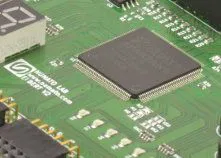Table of Contents:
3D pen – gadget, educational aid and designer’s tool. Like their older, bigger sisters 3D printers, 3D pens use heat to extrude plastic to form various shapes. Virtually everyone we’ve told about them has expressed an interest in this form of creativity, but what should you look for to choose the right 3D pen for you?
How do 3D pens work?
Most 3D printing pens and pens have a hole for feeding filament, a heated tip, a button or squeeze point to control the extrusion process and a power input (or built-in battery). Some 3D printing pens come with a display screen so the user can monitor temperature and operation settings. As the filament passes through the heated tip it liquefies and… we can create objects as desired. OK, that’s all clear now. Now that the basics are behind us, it’s time for the question…
Which 3D pen model to buy?
There is nothing worse than an unwise purchase. Let’s start by thinking about what we want to use the 3D pen for. In order to make an informed choice, you will need to know some basic criteria. So let’s pay attention to aspects such as:
- modelling type,
- modelling method,
- workspace,
- material,
- material diameter,
- printing speed,
- nozzle temperature,
- supply voltage,
- nozzle diameter,
- aesthetic details such as the colour of the casing.
Simple 3D pen for starters – AZPEN 1-M Azure Film
Our first suggestion is the AZPEN1-M 3D pen by Azure Film. This is a great item for drawing realistic 3D objects in the air. The process can be done at home in tandem with normal 3D printing filaments. It uses one of the most popular types of 3D printing material, PLA filament. It’s also more interesting here than the classic drawer pens: it’s up to us to choose the colour of the filament; we want blue or yellow – go ahead, and if we get bored with a particular colour, just load another one.
AZPEN1-M Azure Film is suitable for children, teenagers, architects or anyone who wants to create 3D drawings at a really low cost. The 3D printing technology is the well-known FFF/FDM from 3D printers, but with the 3D pen we don’t wait for the results of the machine, but our print is created while writing – because it is writing.
The operating temperature range of the nozzle is 160°C-230°C. The kit includes a 12V/3A power supply, stand and samples of filament to start. Small dimensions, handy design and shape, safe work – definitely worth starting fun with 3D writing from this model. In Botland shop you can also find PLA Azure Film filament package.
Advanced 3D ballpoint pen – Polaroid Play+ 3D
Can you put a quality guarantee in one word? You can. This word is the brand name of the American giant – the Polaroid brand, present on the market for over 85 years, is also keen to reach for technological innovations. Recognised not only among professionals, for many synonymous with a particular type of photography, this time it offers design and art enthusiasts the Polaroid Play+ 3D pen.
Compatible with Polaroid plastics: PLA, Deluxe Silk, Multi-Color, Glow-in-the-Dark and P-Wood, the pen has an automatic filament retraction function and a power switch that activates after 5 minutes of inactivity. The device can operate in three modes: fast, normal and fine. The ergonomic design of the pen ensures high comfort of use and makes the device equally comfortable for both left- and right-handed people.
On the casing we can also find clear LED indicators informing about the mode of operation and the speed of filament extraction. Powered by 5V DC/2A, it comes with a 1.5m USB C power cord, 45g of PLA filaments in various colours and a comprehensive instruction manual. Ideal for ages 14 and up and younger makers under adult supervision.
High-end versatility – Sunlu SL-300A
A small and versatile tool that will appeal to anyone who likes to draw and create 3D objects? This is our last proposal in this list – Sunlu SL-300A. This 3D pen will be perfect for creating all kinds of models, figures, as well as larger, smaller simple and more complicated objects.
Before you start working with the pen, you need to connect it to power from a 230V/5V mains charger or from a powerbank. On its casing there are control buttons, an LED indicator and an LCD display. From among the options visible on the display, use the buttons to select the type of filament you want to print with, even before the pen gets hot. When the LED indicator lights up red, then the nozzle is heating up.
We can observe the nozzle temperature on the LCD display. When the green LED indicator lights up, the pre-heating is over, and from that moment we can start the fun!
The printing temperature varies with the use of different types of filament. For PLA type material, the values range from 160°C to 180°C, for ABS from 180°C to 210°C, while for PCL the range is from 50°C to 60°C. With the pen we also get a USB power cable, two finger covers, and starter filaments in random colours.
How useful was this post?
Click on a star to rate it!
Average rating 0 / 5. Vote count: 0
No votes so far! Be the first to rate this post.






















